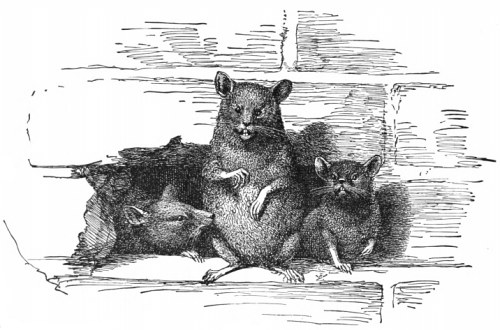
A faded and somewhat droll survival of ecclesiastical excommunication and exorcism is the custom, still prevailing in European countries and some portions of the United States, of serving a writ of ejectment on rats or simply sending them a friendly letter of advice in order to induce them to quit any house, in which their presence is deemed undesirable. Lest the rats should overlook and thus fail to read the epistle, it is rubbed with grease, so as to attract their attention, rolled up and thrust into their holes. Mr. William Wells Newell, in a paper on ‘Conjuring Rats,’ printed in The Journal of American Folk-Lore (Jan.-March, 1892), gives a specimen of such a letter, dated, ‘Maine, Oct. 31, 1888,’ and addressed in business style to ‘Messrs. Rats and Co.’ The writer begins by expressing his deep interest in the welfare of said rats as well as his fears lest they should find their winter quarters in No. 1, Seaview Street, uncomfortable and poorly supplied with suitable food, since it is only a summer residence and is also about to undergo repairs. He then suggests that they migrate to No. 6, Incubator Street, where they ‘can live snug and happy’ in a splendid cellar well stored with vegetables of all kinds and can pass easily through a shed leading to a barn containing much grain. He concludes by stating that he will do them no harm if they heed his advice, otherwise he shall be forced to use ‘Rough on Rats.’ This threat of resorting to rat poison in case of the refusal to accept his kind counsel is all that remains of the once formidable anathema of the Church.
— E.P. Evans, The Criminal Prosecution and Capital Punishment of Animals, 1906
